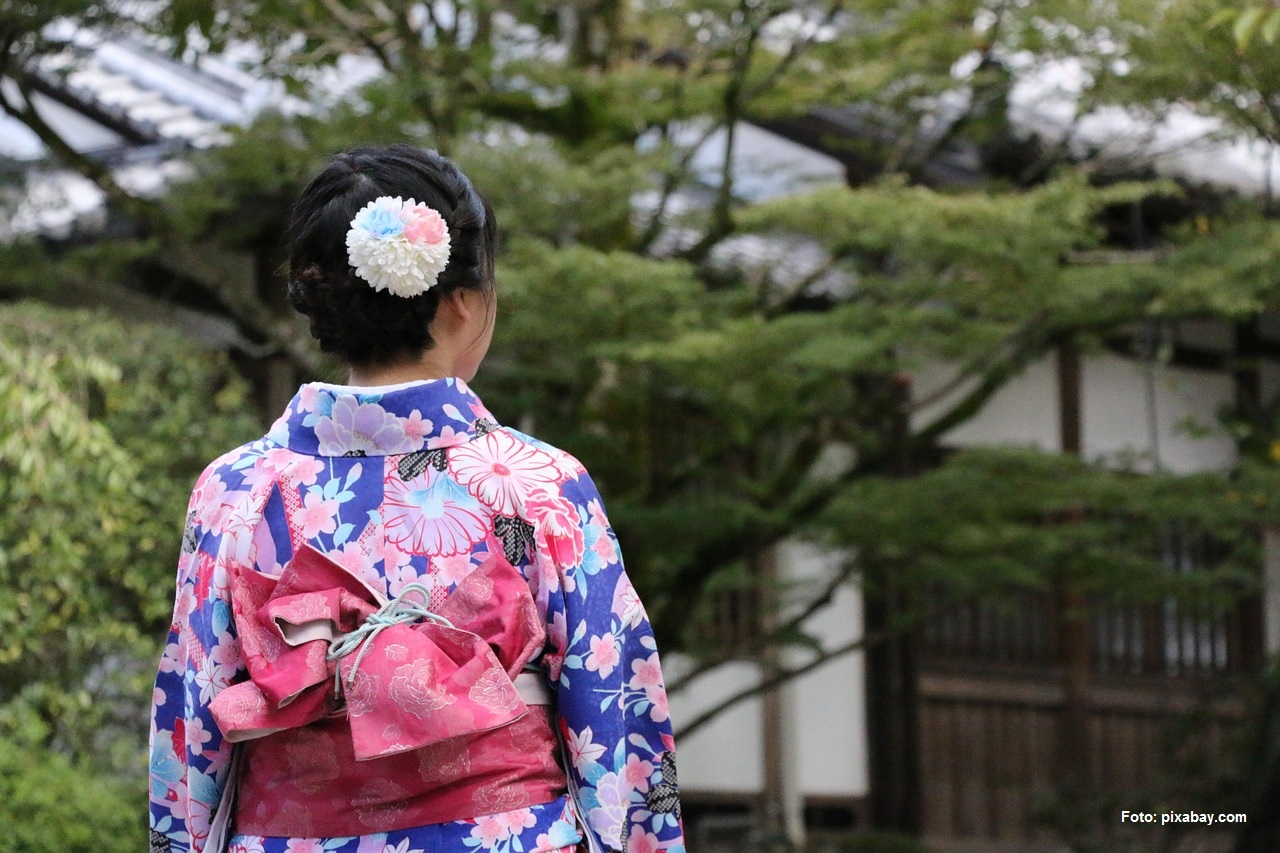The Life of Kimonos in Romania
Lecturer Laura Karaman became the only kimono designer in Romania and told us what her journey was

Călin Coțoiu and Ana-Maria Cononovici, 15.11.2025, 12:17
She was preparing a bachelor’s degree as a clothing designer, within the National University of Arts in Bucharest, at the Fashion section, when the theme of Little Black Dress passed through several styles became an inspiration to adapt the Visual Kei Japanese style of music, and dressing.
Being an opportunity to discover Japanese culture, the art of kimono wearing and much more, Laura Karaman managed to get a license to deepen her studies:
“Trying to get closer to the exam collection, I didn’t pretend doing anything other than to copy what the Japanese did, I didn’t manage to be creative, and so I took a year’s leave, and decided to study traditional Japanese culture, through the courses of the ceremony of the Angela Hondru Romanian-Japanese Study Center, art courses, architecture, in Japan, Japanese language courses, and studying and getting closer to traditional Japanese culture, I realized that the kimonos brought from Japan didn’t fit our bodies. We, as Europeans, have slightly longer arms than the Japanese, and so I decided to make kimonos to get the same harmony for the person wearing the kimono, as I learned about the kimono.”
Lecturer Laura Karaman became the only kimono designer in Romania and told us what her journey was:
“In 2010 I was able to study Japanese culture for the first time. I had the honor to collaborate with various artists from Japan, kimono designers, kimono print designers, and I learned directly from the mentioned source “tricks” about kimonos, and now I also have a course within the framework of the Victory Street Foundation, “Contemporary Traditional Gift”. I also taught within the Angela Hondru Center for Romanian-Japanese Studies, the “Art of wearing a kimono”: all kinds of techniques of wearing the kimono, and how to prepare it for various events.”
We learned from our interlocutor that there is interest in kimonos in Romania, especially because Laura Karaman has creations adapted to local traditions:
“As fabrics go, I opt for materials that are available on the market in Romania, in order to make more accessible, more affordable, kimonos, and the fabric used in Japan for kimonos also has a much more complex washing process, in which the kimono must be unwrapped, washed and then sewn back. It is never washed exactly as it is However. Japanese silk also changes shape when washed, while turning to European fabrics, I noticed that these also retain shape when washed. I have kimonos with Romanian motifs, hand-painted, but also obis, the butterfly belt, fixed in the Romanian technique of “weaving flies”, and brought much more in the contemporary, street clothes with Japanese influence, but also Romanian.’
Kimonos are present in Romania at festivals such as: Asia Fest, Comicon, Hanan, and are studied within the Angela Hondru Center for Romanian-Japanese Studies, or in a course offered by the Victory Street Foundation, by Laura Karaman, our interlocutor. Lecturer Laura Karaman added:
“Compared to 2010, when I started, the kimono and traditional Japanese culture have taken on a much larger scope in Romania, and there are many more people willing to experience traditional Japanese culture. Brought into the contemporary, the kimono can be a piece of clothing very easily integrated into everyday attire if you meet certain criteria and take steps from the traditional side.”
These steps should be followed carefully, starting from the way you choose the kimono according to season, age, or event, to the steps you follow when you put it on, a kimono has approximately 22 accessories, which have their place when you put it on, as Laura Karaman enthusiastically told us.






























